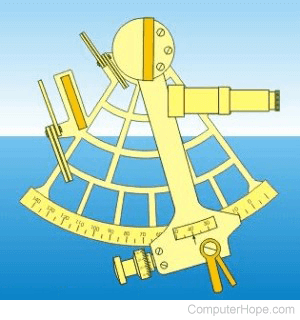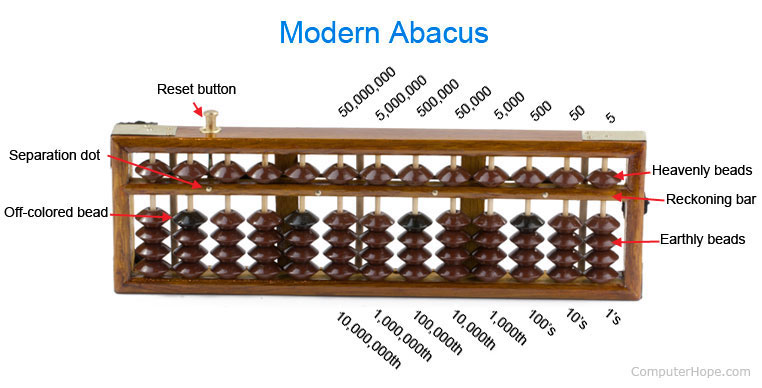What came before computers and mobile devices?

The computer is one of the most important inventions ever, but when looking at the entirety of human history, it's relatively young. Computers help people do countless things, like calculate complex mathematical equations, navigate while driving, create documents, and automate many day-to-day tasks. Humans take computers and mobile devices for granted much of the time, but how did people perform day-to-day activities and calculate mathematical equations before computers were invented? What devices came before the invention of computers and mobile devices?
Numerical calculation devices

Before computers and mobile devices, there were several mechanical devices to help people with calculations. Two of the more well-known devices were the Pascaline developed and built by Blaise Pascal in 1642, and the Arithmometer designed and patented by Charles Thomas in 1820.
Before the inventions of mechanical calculation devices, calculating numerical values was more manual and time consuming. One of the more commonly-used devices for performing calculations was the abacus, used as far back as 2700 B.C. in Mesopotamia. Many civilizations used the abacus, including the Chinese, Egyptians, Greeks, Persians, and Romans, providing them with a way to calculate large and small numbers. The abacus was used in day-to-day tasks, like calculating quantities of food in storage, or how much weight a horse-drawn carriage could support.

Some civilizations used other devices and methods instead of the abacus for calculating numbers. For example, the Inca civilization used a yupana, which was like an abacus, but with a different design. After calculations were done on the yupana, the Incans recorded the numerical values on quipu, which were strings with knots in different locations to represent specific numerical values.
Outside of a numerical calculation device, people used writing utensils and various forms of hard-copy recording medium, like paper, animal skin, or stone, to calculate and record numbers. Manual calculations using a pencil and paper are still used today by many people, especially students in school learning how to calculate numbers with various equations.
Communication devices
Before cell phones and smartphones, people used telephones that were stationary, not mobile. While telephones are still used today, it was the only device at the time that allowed you to vocally communicate with someone from more than a few feet away. The telephone was invented by Alexander Graham Bell in 1876 and since that time, it was and still is widely used.

Before the telephone, a commonly used device was the telegraph machine. Invented by Pavel Schilling in 1832, a telegraph allowed someone to send a telegram to another person, often using morse code to transmit the message. Like e-mail, but printed on paper, a telegram was the quickest way to send a message to another person.
Before the telegraph machine and telephone, the primary method of communication was to send a hand-written letter, often by way of a stagecoach or horseback.
Document creation devices

Before the computer and use of word processing software to create a document, the typewriter was a commonly used device to create documents. Invented by Christopher Sholes and patented on July 14, 1868, a typewriter allowed people to type nearly anything on paper, using a QWERTY key layout.
The typewriter was the culmination of hundreds of years of metal typesetting technology, including the printing press invented by Johannes Gutenberg in 1440. To create printed works for mass audiences, type designers had to design typefaces by casting metal letterforms. Typesetters then arranged these metal letters on a composing stick and pressed them onto paper using ink.
Before mechanical printing, the general method and "device" for creating a document was a writing utensil and paper. Documents had to be hand written, as there weren't any mechanical devices available that could type or print letters and numbers on paper.
Land and sea navigation devices
Before GPS (Global Positioning System) devices and map apps on mobile devices, getting from point A to point B required more careful navigation. For travel on land, the most common method for navigation was with a map printed on paper or similar material. Maps were hand drawn or printed by large printing machines, with details like road and highway names, city names, and mountains and bodies of water as landmarks. A cartographer created maps based on physical observation and experience.

Navigating on water did not rely on maps, as there are no roads or landmarks, except maybe an occasional island. Instead, ship navigators used a compass to know the direction they were sailing. Some navigators also used a sextant, a mechanical device first used around 1731. A sextant allowed navigators to measure the angle between the horizon and celestial bodies to help determine their location on the ocean or sea.
Before the invention and use of the sextant, ship navigators used their knowledge of the skies. Based on the time of year and the location of specific stars (e.g., North Star), they could determine their sail direction and how far it was to land.
Astronomical observation and calculation devices

Although they are still used today, telescopes allowed early astronomers to view and track movement of celestial bodies like stars and planets. Before computers, predicting future movement and locations of stars and planets was calculated by hand. Observations made over time allowed for more accurate calculations, but still required a writing utensil and hard-copy medium like paper. Early telescopes were also more limited in their viewing distance and angles, making it difficult to track celestial bodies outside our solar system. Most astronomical observations and calculations were done for planets in our solar system, including Mars, Jupiter, and Saturn.
One of the earliest known astronomical calculation device is the Antikythera mechanism. Constructed in ancient Greece sometime between 200 and 60 B.C., the Antikythera mechanism was an astronomical calculation device used to calculate the movement of our Sun and Moon. How it was built, being very advanced for its time, is still unknown.
Another early astronomical device is the astrolabe, which like the Antikythera mechanism, allowed users to calculate positions of celestial bodies. The astrolabe invention is attributed to Apollonius of Perga sometime between 220 and 150 BC, and was used for centuries by many civilizations.

